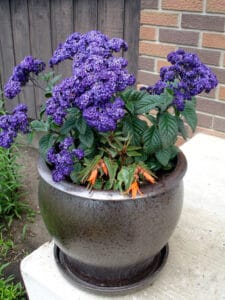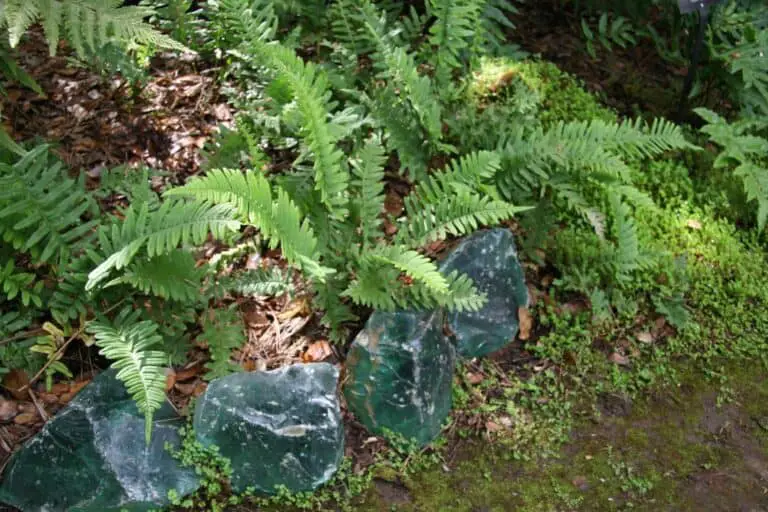Gardening in shaded areas doesn’t mean compromising on beauty or variety. Flowering shade plants provide a lush backdrop and vibrant splashes of color even in the dimmest corners of your garden. From the dainty blooms of Anemonella thalictroides to the striking spikes of Cimicifuga, these plants thrive under a canopy of trees or in the shadow of taller shrubs, bringing life and color where sunlight is scarce.
These plants not only excel in low-light environments but also offer a range of textures and hues that enhance the visual appeal of any shade garden. Whether it’s the subtle charm of pale yellow, pink, or the classic elegance of white flowers, shade-loving flowering plants ensure that shaded spaces receive their moment in the spotlight. Their ability to flourish in cooler, darker spots makes them indispensable for gardeners looking to create a balanced and beautiful landscape.
Benefits of Growing Shade-Loving Flowering Plants

Growing shade-loving flowering plants offers numerous advantages for gardeners seeking to enhance shady areas of their landscape. These plants, adapted to lower light conditions, typically require less sun to thrive, allowing them to flourish in environments that would challenge sun-loving species. Particularly, shade flowers like bleeding heart or ferns introduce vibrant colors and unique textures to shaded garden spots.
First, shade-loving flowering plants help to stabilize soil and reduce erosion in shady corners where intense sunlight does not reach. Their root systems hold the soil firmly, preventing it from being washed away during heavy rains. Flowers such as hostas and coral bells, which possess substantial root masses, are excellent choices for maintaining soil integrity under the canopy of mature trees.
Additionally, these plants contribute to biodiversity by providing habitat and food sources for wildlife. In the shaded garden, flowering plants like astilbe and foxglove produce blooms that attract pollinators such as bees and butterflies. This not only aids in the pollination of the garden but also supports local ecosystems. Furthermore, many shade-loving plants are also deer resistant, making them a practical choice for areas where wildlife browsing can be a problem.
Incorporating shade-loving flowering plants in a garden landscape enhances visual appeal with their often unique flowers and attractive foliage. They are particularly effective in transforming dark spots into vibrant areas of interest, proving that low-light gardens do not have to be drab. Whether planted beneath trees, in borders, or in woodland gardens, these plants prove that even shaded areas can become highlights of a garden’s visual narrative.
Popular Types of Shade-Loving Flowering Plants

Annuals and Biennials
Annuals and biennials add quick, vibrant touches to shady garden spots and are ideal for gardeners seeking flowers for shaded areas without long-term commitment. Impatiens thrive in partial to full shade, displaying colorful blooms in hues of pink, white, and purple throughout summer until frost. Begonias, versatile and shade-tolerant, offer bushy foliage and delicate flowers in a spectrum of colors. They perform well in hanging baskets or ground cover, adapting easily to dappled shade. For early spring blossoms, pansies provide a burst of color with their distinctive markings, flourishing even in light shade.
Perennials
Perennials are the backbone of a shade garden, offering continuity and a recurring splash of color year after year. Hostas, one of the perennial shade plants, present lush foliage in various shades of green, edged or patterned with creams and yellows, blossoming with tall stalks of lavender or white flowers in mid-summer.
The Bleeding Heart (Dicentra spectabilis) features distinctive, arching stems adorned with heart-shaped, pink flowers, thriving in partial shade and adding a romantic touch to any shaded garden. For damp, shady corners, Astilbes boast feathery, plume-like flowers in shades of pink, red, and white, requiring only well-drained soil to flourish.
Ferns and Foliage Plants
Ferns and other foliage plants are essential for adding texture and varying shades of green to the shade garden. The Japanese Painted Fern (Athyrium niponicum ‘Pictum’) is noted for its striking silver and burgundy fronds, which can brighten up dark spots with moist, well-drained soil. Coral Bells (Heuchera), available in a variety of colors from peach to deep burgundy, feature rounded, mounding habits that complement both flowering plants and more substantial greenery. They thrive in partial to full shade, making them versatile additions to both woodland and shaded perennial gardens.
Care and Maintenance for Shade-Loving Plants

Soil and Watering Needs
Shade-loving flowering plants typically require well-drained soil rich in organic matter to flourish in shady gardens or dappled shade areas. Enhancing the soil with compost or well-rotted manure helps retain moisture while ensuring proper drainage, essential for preventing root rot in perennial shade plants. Most shade perennials, such as hostas and Coral Bells, thrive in moist, humus-rich soil. Watering these plants is crucial, especially during dry spells and in early spring when new plants establish their roots.
Gardeners should aim to keep the soil consistently moist but not waterlogged, balancing between overwatering and under-watering by checking the soil moisture regularly. For plants in full or deep shade, reducing the frequency of watering accommodates the slower evaporation rates in cooler, darker spots.
Pruning and Disease Management
Pruning shade-loving plants generally involves removing dead or diseased foliage to promote fresh growth and ensure the plant’s energy is directed towards producing robust and vibrant flowers. Regular trimming of perennial flowers such as the Bleeding Heart in late winter or early spring can also help maintain their shape and size, fitting well within the shaded garden aesthetics. Disease management is vital to keep these plants healthy; shade-loving plants are prone to fungal infections due to the higher humidity in shaded areas.
Applying fungicide treatments early in the season or as soon as signs of disease appear can prevent further damage. Additionally, maintaining good air circulation around the plants by not overcrowding them helps minimize the risk of disease, keeping each plant vibrant and full of unique flowers throughout their blooming season.
Design Ideas for Shade Gardens
Incorporating Texture and Color
To enhance the aesthetic of shade gardens, incorporating a variety of textures and colors is essential. Utilizing perennial shade plants like hostas, which offer lush greenery and are available in several variegations, adds depth and contrast. Coral bells, with their colorful foliage ranging from bronze to deep red, thrive in partial shade and enhance visual appeal with their delicate flowers.
Adding flowering shade perennials, such as Astilbes with their feathery blooms, introduces vibrant colors from pale pink to rich purple. These plants not only bring life to dark spots but are also low maintenance, providing long-lasting beauty with minimal effort. For an interesting texture contrast, integrate ferns like the Japanese Painted Fern, whose silver and burgundy fronds create a striking backdrop for flowering plants.
Layering Plants for Visual Interest
Layering plants of varying heights and types creates a dynamic and visually compelling garden space. Begin with taller shade-loving perennials, such as the Bleeding Heart with its unique pink, heart-shaped flowers on arching stems, placed towards the back. Then, introduce mid-height plants like flowering shade perennials including purple-flowered perennials for early summer bloom.
For the front layers, consider low-growing plants and ground covers, such as the delicate flowers of the foamflower, which thrive in full to partial shade and plant them in dappled shade areas beneath taller plants to create a lush, full-garden look. By planning for sequential blooming, from early spring through late winter, the garden maintains an ever-evolving display of colors and textures, ensuring shade gardens remain lively and attractive throughout the seasons.
Takeaways
Shade-loving flowering plants offer an exceptional opportunity to beautify the less sunny spots of a garden. By choosing the right plants like impatiens, begonias, and hostas, gardeners can transform shaded areas into vibrant, colorful retreats. Proper care and creative design play pivotal roles in cultivating a thriving shade garden. With the strategic layering of different plant types and heights, garden enthusiasts can ensure a lush, appealing garden that blooms throughout the year.
Embracing these plants not only enhances the aesthetic of a garden but also supports local ecosystems by providing habitats for various pollinators. Whether you’re a seasoned gardener or a beginner, exploring the world of colorful shade plants is sure to bring delightful results.
Other suggested articles:

